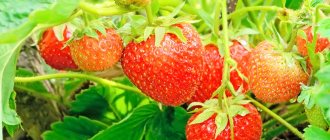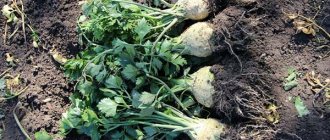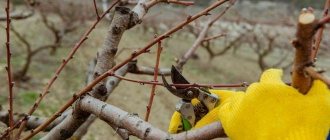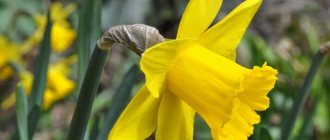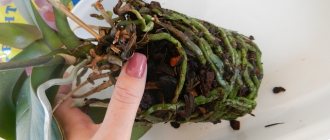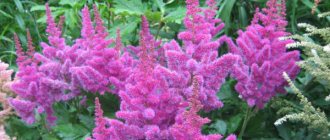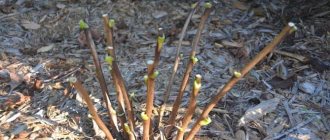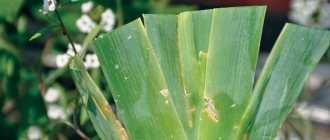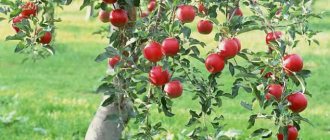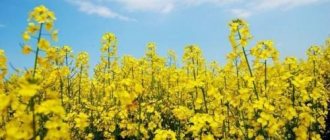Remontant strawberries, or as they are more correctly called, remontant garden strawberries, can increasingly be found in the garden plots of not only amateurs, but also professionals. It sometimes inhabits large territories, and the owners are happy with this coexistence. However, to my surprise, many people still have questions about the proper care of remontant garden strawberries, as if this overseas miracle was brought to our land just a couple of days ago.
Caring for remontant strawberry bushes. © Uteki
The main difference between remontant garden strawberries and ordinary ones is its ability to bloom and, accordingly, bear fruit twice a season, without interruption. Only a small fraction of plants have this ability - raspberries and a number of citrus fruits.
Garden strawberries of remontant varieties can lay flower buds either in long daylight conditions (for example, the Garland variety) or in neutral daylight conditions (for example, the Miracle of the World variety). It is noteworthy that varieties capable of setting flower buds in long daylight conditions produce approximately 40% of their harvest in July and up to 60% of their harvest in August.
Remontant garden strawberries, capable of laying flower buds in neutral daylight conditions, bloom and bear fruit throughout the warm period, gradually yielding their harvest. Considering the great wear and tear of plants, plantations of remontant strawberries that bear fruit twice a year also need to be changed once every three years, and those that bear fruit throughout the warm period - once every two years, each time changing the location of the plot.
In our material we will try to bring to your attention in as much detail as possible the subtleties of caring for remontant garden strawberries.
How to properly care for remontant garden strawberries?
By and large, varieties of remontant strawberries cannot be called capricious; they are all quite unpretentious, but they still have their own subtleties in care. For example, everyone knows that modern large-fruited varieties of remontant strawberries can form berries weighing from 65 to 90 grams or more. Naturally, this will most likely lead to fairly rapid depletion of the soil and the need to apply additional fertilizers. This may be why a number of gardeners, contrary to general opinion, advise removing the very first spring flower stalks.
Then the second harvest of remontant strawberries, firstly, will be much earlier than expected, therefore, the plants will prepare for winter without human intervention. Secondly, the berries will be tastier and larger. Sometimes the total harvest after such a simple technique even exceeds two total harvests or an all-season harvest for remontant varieties of a different type.
Caring for remontant garden strawberries includes strictly mandatory steps - this is indispensable watering (the plants must be provided with plenty of moisture), fertilizer (everything is good here in moderation, but the plants should not suffer from a deficiency of one or another element), loosening the soil (after each watering and rain to avoid the formation of a soil crust when air and water exchange is disrupted), mulching the beds (after each watering, as it inhibits the growth of weeds and the formation of a soil crust), weed control (especially wheatgrass - the most malicious competitor of crops) , destruction of pests and diseases (at the earliest stages of their manifestation), pruning bushes (a specific procedure for remontant strawberries) and, finally, preparation for winter (an important stage in the life of remontant garden strawberries).
Important ! Gardeners who have been through fire and water recommend that you always mulch the beds with remontant garden strawberries, because the root system of this berry crop, unlike the common garden strawberry, is located high, and the plants very often suffer from a banal lack of moisture. To save irrigation water, you need to use mulch almost immediately after watering (and it is better to water with water at room temperature and in the evening). The mulch can be spruce needles, sawdust, straw, humus, hay, or ordinary mown grass. In addition to protecting against moisture loss, mulch will also protect the berries from being splashed with soil during rain and watering and will inhibit the growth of weeds (don’t forget about them too!).
Caring for remontant strawberries. © Aliceson
Caring for the bed after pruning
After pruning the strawberries, you need to take care of the garden bed: loosen it, fertilize it and insulate it for winter. The scheme of agrotechnical actions is as follows:
- Water the flowerbed with trimmed bushes with warm water. If it's not cold, then every day. It is better to use drip irrigation, irrigating the soil from a watering can with a fine nozzle.
- Treat the soil under the crop with chemicals against pests and diseases. Destroying bugs hidden in the ground will protect against their reproduction in the spring.
- Loosen the soil before applying fertilizer. Pay special attention to the row spacing: here the soil can be lifted 10-15 cm with a small hoe or spatula.
- Feed with organic matter. Use mullein. Pour fertilizer under the roots, between the rows.
- Warm the soil before the onset of cold weather. Use shelters made of straw, pine paws, hay, or a special covering film.
Watering remontant strawberries
Remontant varieties of garden strawberries need to be watered more often than ordinary garden strawberries, especially in the dry seasons of the year. Immediately after planting the seedlings, the plants need to be watered every day, then after five to six days, watering can be done every other day, and ultimately, watering just a couple of times a month will be enough.
To water remontant strawberries, you can only use warm water at room temperature; it’s great if it’s rainwater collected in a barrel painted black. You can water the plantings both in the morning and in the evening. When watering, try to ensure that the soil in the area where remontant garden strawberries grow is moistened by two to three centimeters at a time.
As for the mulch of remontant strawberries, as we already wrote above, it is needed, but it is not at all necessary to cover the soil with mulch immediately after watering; this can be done the next day. Instead of mulch, if, for example, it rains, the soil between the rows can be carefully loosened. But remember: it is very important not to damage the roots, which, as we have already written, are located closer to the surface of the soil than those of common strawberries. The main thing when mulching or loosening is to avoid soil crust so that air can freely penetrate to the roots.
If there is no rain for a long period and the soil dries out, then you can break all the rules of watering and moisten the soil almost every day, without allowing the soil to dry out too much, this is very important. If the soil is already very dry, for example, in a country house where you have not been for several days, then first very carefully loosen the soil and then water it, but do not do the opposite. Frequent watering is especially important for day-neutral varieties of remontant strawberries; why, I think there is no need to explain here. These same varieties require more frequent and thorough weeding, especially after rain and the removal of dying leaves that turn red.
How to feed strawberry bushes
The next step should be feeding. Many summer residents use herbal infusions to fertilize strawberries; nettle infusion is especially effective in this regard. Fill two-thirds of the barrel with crushed young nettles, dandelion leaves, and honeydew, removing the inflorescences so as not to spread the weeds throughout the garden bed. Then fill it with water, cover it with a lid and leave it in the sun for a week.
Read more: How to make green fertilizer
The result is a horribly smelly black liquid that effectively replaces manure when feeding. It should be diluted with water at the rate of 1:10.
It should be noted that strawberries really like yeast feeding. Therefore, many summer residents combine these two types of feeding by adding yeast to the herbal infusion. True, you need to make sure that fermentation does not squeeze the infusion out of the barrel.
In beds covered with artificial mulch, fertilizing is done by watering into the cuts that were made when planting the bush. Fertilizing combined with regular watering should be done until mid-August. Watering must be done throughout the summer.
Fertilizer for remontant strawberries
It is clear that remontant garden strawberries can be severely depleted and they definitely need proper feeding. Remontant garden strawberries most actively consume elements such as nitrogen and potassium from the soil. But she needs phosphorus, but to an insignificant extent. Taking this into account, fertilizing with phosphorus can be carried out only once, adding doses of superphosphate (15-20 g per square meter) only when planting a plantation of remontant garden strawberries.
An approximate feeding scheme for remontant strawberries is as follows:
Usually, the first feeding of remontant strawberries is carried out in the third ten days of May, during this period they use urea, the composition is very weak - one gram or two (if the soil is poor, per bucket of water), this is the norm per square meter of soil. Approximately in the second half of June, when peduncles of repeated fruiting begin to actively form, you can add mullein (1:10 - in the amount of 0.5 liters per square meter or bird droppings 1:15 - in the amount of 0.3 liters per square meter). It is quite acceptable, along with organic fertilizers, to use newfangled mineral fertilizers, such as Kristallin Solution or Kemira Lux.
In general, ideally, the entire season should be stretched out so that there are about ten fertilizers, alternating these fertilizers.
The second option for feeding remontant strawberries is when, at the very beginning of June, the plants are fed not only with slurry diluted 10 times and bird droppings 15 times, but also with the addition of 1% urea (1 g per bucket of water), this entire composition should be used on 2 - 3 square meters of area.
Fertilizer for remontant strawberries. © SunnysideLOCAL
Do I need to prune strawberries in the fall?
Beginning gardeners, having planted wild strawberries (strawberries) on their plot, initially listen to word of mouth when caring for them. However, having picked up advice from unreliable sources, they quickly become sad: the harvest is not encouraging and is getting worse every year. Only with experience comes the understanding that this miniature berry plant is not as simple as it seems at first glance. Strawberries do not forgive gross errors in care and are primarily offended by careless and untimely pruning.
Is it necessary to prune garden strawberries in the fall? Word of mouth insists that strawberries must be pruned, but why and when exactly to carry out this procedure often cannot be clearly explained. Let's look into this important issue.
Diseases of remontant strawberries
Gray rot
Remontant garden strawberries are often attacked by gray rot. It manifests itself most actively in dense plantations, where the soil is not loosened and frequent watering is carried out, especially with sprinkling and cold water. Gray rot can affect all above-ground organs of the plant, which will lead to losses of up to 85% of the entire crop. In order to prevent the appearance of gray rot on remontant strawberries, it is necessary to plant on the site in accordance with the characteristics of the growth and development of a particular variety, to mulch the soil, as well as sufficient, but not excessive watering. At the first sign of infection, the affected parts of the plants should be removed.
As a preventive measure, you can treat plants at the very beginning of the growing season with 2.0% Bordeaux mixture, and after harvesting at the very end of the growing season, to consolidate the result, with a 1% solution of colloidal sulfur.
There are also fungicides to combat the disease, but you can only use approved ones, in full accordance with the instructions on the package, for example, Strobi, Switch, Euparen, Triadimefon (Bayleton), Captan. The biological product Alirin-B is considered the safest from the list of recommended ones.
Brown spot
It manifests itself when, as in the previous case, strawberry plantings are thickened, there is too much moisture, and day and night temperatures fluctuate noticeably. As a preventive measure in the spring, remove all dry leaves so that the infection does not “settle” on them and treat with 2% Bordeaux mixture. Do not forget about mulching, which will not allow the fungus to reach the surface.
If the disease is very active, then use approved fungicides, strictly following the instructions on the package, for example, Skor, Strobi, Fundazol.
Powdery mildew
The first sign of the appearance of this disease is the purple color of the strawberry leaf blades, then they curl and become ash-gray, as if sprinkled with old flour. If you don’t want this disease to come visit you, then in early spring, treat the plants with a weak (slightly pink) solution of potassium permanganate or 1% colloidal sulfur.
There are also fungicides, but use only approved ones and exactly in accordance with the instructions on the package, for example, Topaz, Fundazol, Tilt, Strobi and Fitosporin-M.
Brown spotting on strawberry leaves. © Tip10
Powdery mildew on strawberry leaves. © gov.au
Timing for autumn pruning of strawberries
There is no specific time frame for pruning. Work on strawberries when it's convenient for you. Your main task is to ensure that the bushes leave for the winter prepared. The most convenient option is the end of August-September.
The cold weather is still a long way off. And the strawberries will still have time to produce a few young green leaves with which they will spend the winter. The weather should be dry. Bright sun or rain is undesirable. The best time to work is morning or evening.
Pests of remontant strawberries
The first pests of remontant strawberries on my site are slugs. I saved myself from them by planting garlic between the rows: honestly, I never saw a single slug again.
Strawberry mite
It is considered a much more dangerous pest of strawberries: if it damages young leaves, they curl and turn yellow quite actively. The plant itself is sharply inhibited in growth. The mite can infect from half to the entire plantation, and without treatment it can lead to its death.
A 3% solution of colloidal sulfur helps to overcome mites, but it can only be used very early in the spring and after the entire harvest has been harvested. Well, and of course, various types of approved acaricides.
Strawberry nematode
Usually, if a strawberry is infected with a nematode, its leaves become deformed and curled. A characteristic feature can be seen on the petioles: they become too fragile and sometimes break even from the wind. Fruiting on such plants is either weak or absent altogether. The nematode is considered a quarantine pest; if it is present on the site, plants must be immediately removed and burned.
Spider mite
Usually the strawberry leaves seem to become limp, and if you turn them over, you will notice traces of the mite’s activity – a cobweb. As a result, the leaf blades turn yellow and dry out prematurely. Gardeners write that Karbofos helps very well against spider mites. After harvesting the entire crop, they process the plants and cover them with film for several days.
Signs of damage to strawberries by strawberry or cyclamen mite. © K. Lynch
Dead strawberry plants infected with strawberry nematode. © Surendra Dara
Strawberries affected by spider mites. © Surendra Dara
Pruning remontant strawberries
Caring for remontant strawberry bushes, among other things, also includes pruning. Typically, pruning bushes is enough to do once a season - either in spring or autumn.
If you live in a cold region where remontant strawberries require shelter, then pruning should be done in the autumn. This is done as follows: after the final harvest of the entire harvest, the lower leaf blades are removed from the bush, trying not to touch the upper leaf blades, because it is in their axils that the fruit buds are laid, from which the fruits will form next season.
In the event that berries do not form on the mustache at all and the gardener does not plan to propagate remontant garden strawberries in this way, then removal of the mustache is mandatory.
Remember, however, this rule: after the first fruiting of remontant garden strawberries, the removal of the whiskers is usually not carried out, but the leaves that have begun to dry out, have formed spots or are hiding more developed and healthy leaves must be removed. Removing such leaves can be done in the fall, immediately after harvesting the entire harvest, when the foliage slowly begins to dry out.
If you are a resident of a cold region, then take your time and postpone this operation to the spring, remove such leaves after the snow cover has completely melted.
Important ! Many people neglect to trim dead leaves and tendrils of remontant garden strawberries, but their removal is like a shield that protects plants from pathogens, because it is on diseased, old foliage that the infection overwinters.
How and when to prune
Autumn pruning
Many gardeners postpone pruning strawberries until the fall. During this period, there is less work in the garden, and finally there is an opportunity to work on the strawberry bed. But by this time, the neglected berry plant usually begins to mope and presents a sad picture. The surface of the soil under the bushes is covered with dried leaves; many living leaves are no longer green, but variegated - with pink, brown or white spots (depending on the disease that colored them). Protruding dry flower stalks complete the landscape. I just want to quickly restore order and beauty to the garden bed by cutting off each leaf rosette at the base!
By autumn, the number of diseased leaves increases sharply
Do not hurry! Such drastic pruning, carried out in the fall, will cause severe harm to the plants, jeopardizing not only the health, but also the life of the bushes. This crop is winter green. It does not shed its leaves in the fall, like many berry plants, but renews its leaves gradually throughout the year.
In autumn, reserve substances accumulate in green leaves, thanks to which plant tissues do not freeze in winter. In addition, in cold weather, foliage serves as protection for horns and flower buds, traps snow and insulates them. By removing the entire leaf rosette in the fall, you will greatly weaken the bushes on the eve of frost and leave the hearts to be torn to pieces by winter's adversities.
In autumn, remove only dry and damaged leaves, and be sure to leave healthy ones.
If you do decide to do autumn pruning, remove only dried leaves and flower stalks, and be sure to leave the green leaves. If signs of disease are visible, prune severely affected specimens and then generously moisten the remaining leaf rosettes with a solution of a suitable fungicide. Be sure to remove all plant debris from the garden bed and burn it.
Spring pruning
With the arrival of spring warming, overwintered green foliage will be the first to begin the process of photosynthesis, which will be the key to the active development of new leaf apparatus and the formation of a generous harvest. Therefore, cutting off the green leaves of strawberries in the spring means ruining the future harvest. Plants will direct all their strength to growing new foliage, but they will no longer have the strength to form an ovary.
After the snow melts, you need to remove all dead leaves from the garden bed.
However, in early spring after the snow melts, you must carry out corrective pruning: remove frozen, damaged leaves with signs of disease - they can become a source of infection throughout the strawberry plantation. After this procedure, the plants are treated therapeutically (or preventively) with a fungicide solution, and all trimmed foliage is burned.
Summer pruning
Until the harvest, the most important processes will take place in the strawberry leaves, on which the size and quality of the berries directly depends. Therefore, in the spring and in the first half of summer, you should help the rosettes remain lush and healthy with the help of timely watering, fertilizing and preventive spraying against diseases and pests. You can read about how to fertilize this crop in the publication on our website: 5 fertilizers for garden strawberries - and you are guaranteed a harvest.
Drastic pruning of bushes is carried out immediately after harvesting.
But when you remove the last berries from the bushes, the most favorable time will come for a rejuvenating haircut. It becomes difficult for bushes that have spent all their energy on fruiting to maintain such a lush leaf apparatus. Therefore, drastic pruning will help them gather their courage, rest, and then get down to an equally important task - laying flower buds for the next season. At the same time, new young leaves will grow, which by autumn will turn into lush rosettes and will become the key to a successful wintering of the plants.
Autumn care and preparation for wintering
Long sunny day remontant strawberry plants often do not ripen fully by the end of the season, especially if they are not grown in a greenhouse. Taking this into account, not only is part of the harvest lost, but sometimes plants that do not have time to adapt to cold weather and frost also suffer. The best option to save such plants is to cover them with fresh straw 5-8 cm thick, and throw spruce branches on top, which will keep the straw from flying all over the area.
Remontant garden strawberry. © siliconinvestor
